What means to process apple trees in spring before bud break?
Apple trees awakening from winter sleep need special preparation for the upcoming flowering and fruiting. One of the measures ensuring a high-quality harvest is the treatment of trees from pests. When, what and how to spray apple trees from pests in the spring is an important question for summer residents.
The main pests of the apple tree
To begin with, let's list the 10 main "unwanted tenants" of apple orchards.
- The sawfly is a small bee-like insect. It feeds on the inner parts of the ovaries. After wintering in the ground, its larvae are selected from shelters 5-6 days before the apple tree begins to bloom.
- Aphids are a sap-sucking insect that colonizes young shoots, weakening them.
- The red mite, which also feeds on leaf juice, hibernates in the bark, and is capable of 5-6 renewal cycles per season.
- The apple blossom beetle is a small brown beetle with a proboscis. Its larvae develop in buds, eating them clean.
- The apple moth lays its eggs on the ovaries. The larvae live directly in apples, often eating them completely.
- The apple scale insects the bark of trees, weakening them, making them vulnerable to incurable diseases, bark beetles.
- The apple moth is dangerous because butterflies appear only in the fall. In the spring, the trees destroy its caterpillars, gnawing all the green parts. In advanced cases, apple trees remain without foliage and, accordingly, without fruit.
- The honeydew (bean leaf) is a small insect whose larvae feed on juices and leave traces - droplets of sticky liquid that sticks together the petals of unopened buds and unopened leaves.
- Leaf roll. The diet of her larvae is leaves. 4 generations of the pest per season are capable of completely lime the apple tree.
- Ants not only settle colonies of aphids, they often gnaw open buds.
When to process an apple tree
Prevention includes three stages, and the implementation of each of them is strictly necessary if the summer resident wants to get a high-quality harvest.
Do not neglect whitewashing the trunks. A layer of lime or paint not only protects the tree from burns of the burning spring sun, but also has a negative effect on pests wintering in the bark and spores of pathogenic fungi.
The first stage is spraying on the kidneys. It is carried out before bud break - in the 1st or 2nd decade of March, at a positive air temperature (from + 4 ° C). The first spraying will help get rid of the lion's share of the larvae, delay or even prevent the spread of pests in the garden. The branches of the crown, trunk, skeletal branches are completely sprayed; it is also required to process the near-trunk circle and the soil under the crown.
The second stage is spraying on the bud before flowering. Held at the end of March-April. By this time, the larvae wake up, feeding on young shoots, buds.
Often the second stage is divided into four stages, each corresponding to certain insecticides.
- The buds begin to open (green cone) - treatment against the larvae of aphids, suckers.
- Green buds - spraying from the flower beetle.
- Rosebuds - you can use biological agents against fungal diseases, fumigate, use herbal infusions.
- Flowering - use fumigation.
At the second stage, mild agents are used for spraying so as not to scare off bees and other pollinating insects.
The apple tree is processed for the third time in May, immediately after flowering. The treatment is directed against ticks, which are activated during this period.
How to process an apple tree?
Garden protective equipment is divided into three groups:
- chemicals;
- biological agents;
- folk remedies.
The last two groups are classified as sparing, their use is effective with relatively small colonies of pests.
Chemical insecticides
They act faster and more reliably. It is important to strictly observe the recommended dosages, as well as periodically change the drugs, since they are addictive: the pests adapt to them, calmly survive all treatments. Spraying with pesticides in early spring does not have a negative effect on people: during the ripening of the crop, they have time to completely decompose.
Urea (carbamide) counteracts aphids, leafworms, copperheads. The addition of a small amount of copper sulfate slightly delays the flowering of apple trees, which protects the future harvest from recurrent frosts.
To prepare the solution, take:
- urea - 700 g;
- sulphate copper - 50 g;
- water - 10 liters.
At the first stage of processing, it is advisable to spray the apple trees with urea.
"BI-58" is an insecticide aimed at destroying scale insects, ticks, leaf rollers, honey beetles, aphids, caterpillars of other pests. The working solution is prepared from 10 ml of the drug and 10 l of water.
For a more effective impact on pests, special, narrowly targeted pesticides are used.
- Chlorofos and Karbofos are used against the sawfly. Combine with frequent loosening of the soil under the apple tree.
- To get rid of aphids, trees are treated with the preparations "Actellik", "Inta-Vir", "Aktara", "Iskra".
- With the red tick they fight "Aktellik", "Neoron", "Ftoverm", "Fufanon".
- To remove the apple sucker, use "Cypermethrin", "Confidor", "Aktara", "Diazinon".
- The flower beetle is treated with "Fufanon", "Karbofos", "Iskra".
- To combat the moth, use "Fufanon", "Iskra", "Ditox", "Sirocco".
- The moth caterpillars are exterminated with the help of "Inta-Vira", "Karbofos", "Fufanon".
- Ditox, Calypso, Fastak are effective against leaf rollers.
It is necessary to treat apple trees with chemical and biological preparations in protective clothing with the use of individual chemical protection equipment.
Biological insecticides
Biological products are recommended for the second stage of apple processing, since they are most effective at temperatures above + 10 ° C. The working substances in such insecticides are bacteria and viruses or their toxins that kill pests.
Popular biological products:
- Planriz is a universal remedy for pests and pathogenic microorganisms;
- "Bitoxibacillin" - effective in killing foliage-eating pests;
- "Aktofit" - successfully used against aphids, ticks;
- "Lepidocide" - has proven itself well in the fight against leaf rollers, moths;
- "Aktarin" - helps to cope with aphid colonies;
- "Nemabakt", "Antonem-F" - are designed to combat copperhead;
- "Fitoverm" - is used against the moth, scale insects, leaf rollers.
Fitoverm is a bioactive agent that affects almost all pests. Its use helps to reduce the number of treatments.
Folk remedies
The main advantage of folk remedies is harmlessness to people. They are processed not only in spring, but throughout the entire growing season, if the need arises.
Popular spraying options:
- garlic infusion - half a kilogram of garlic is poured with 5 liters of hot water, insisted for 2 hours, filtered, water is added to a volume of 10 liters;
- infusion of pharmacy chamomile - 700 g of dried flowers are poured with hot water, infused overnight, then filtered, add 2-3 tbsp. l. liquid soap and water up to 10 liters volume;
- hot pepper decoction - 100 g of dried pods are poured with a liter of water, boiled for 2 hours, filtered after cooling, and added with water to 10 liters;
- wood ash - 2 glasses are poured with a bucket of hot water, a little liquid soap is added, insisted for 10-12 hours (if you add a tablespoon of urea, the apple trees will simultaneously receive nitrogen fertilization on the leaf);
- black henbane decoction - 1 kg of dry raw materials in 10 liters of water insist 12 hours, filter and add 30-40 g of soap.
Bitter wormwood with its smell repels most garden pests. Planted along the perimeter of the site or in small groups in the garden, it will greatly facilitate the struggle of the summer resident with the enemies of cultural plantings.
Decoctions of dried flowers of marigolds, calendula, yarrow can be sprayed on apple trees against aphids in any growing season, except for flowering.
To ward off ants from apple trees, the lower part of the trunks is coated with tar or grated garlic.
Bordeaux liquid for spring processing of apple trees
The most common way to sprinkle apple trees in spring is with copper sulfate. It is not only effective against pests, but also suppresses the development of pathogens of fungal diseases, prevents the appearance of mold, mosses, lichens. It is used not only for spraying tree crowns, but also for soil disinfection.
A working 1% solution of copper sulfate is prepared from 100 g of copper sulfate and 10 liters of water. This concentration will not cause burns on the leaves, will not change the acidity of the soil.
Bordeaux liquid of 1% concentration is prepared from 100 g of copper sulfate, 100 g of slaked lime, 10 liters of water. Vitriol and lime are dissolved using different containers of 5 liters. The resulting milk of lime is filtered, then a solution of vitriol is poured into it. Mix everything well.
If the treatment of apple trees with copper-containing preparations is carried out once a year, you can spray the trees with 3% Bordeaux liquid made from 300 g of vitriol and 400 g of lime. When using Bordeaux liquid, a 1% solution is taken at the 2nd stage.
Fumigation of the apple tree
During flowering, it is impossible to spray apple trees, even with sparing preparations: droplets of liquid remaining on the buds and petals make it difficult for the bees to work. But pests do not know this, they continue their dirty activities. Fumigation helps to deal with them. The procedure is simple and does not harm trees, people, or the environment. For it, a dry sunny day is chosen, ideally a calm one.
For fumigation, dry tobacco leaves are laid out on straw or hay in an even layer under a tree and set on fire. Such a "pillow" burns slowly: 3 kg of leaves smolder for over an hour, this is enough to evict pests from the tree.
Spring spraying of apple trees as a measure of controlling insect pests is most effective than all subsequent ones. During this period, it is clearly visible to what extent and with what pests the garden is affected. This makes it easier to choose an insecticide. The larvae waking up from sleep are in a hurry to populate the trees in order to be closer to the food source. Direct contact of a poison with an insect leads to the rapid death of the latter. Correctly carried out processing significantly improves the quality of the crop.



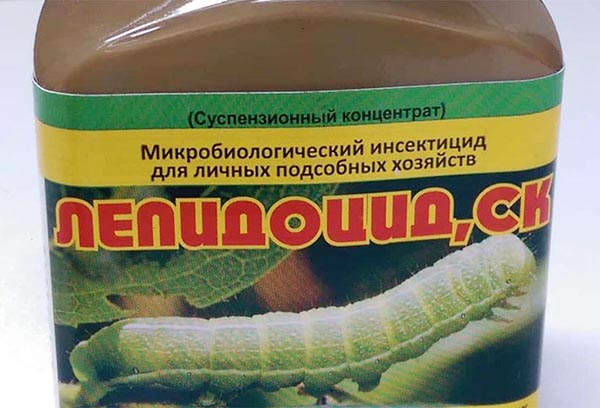
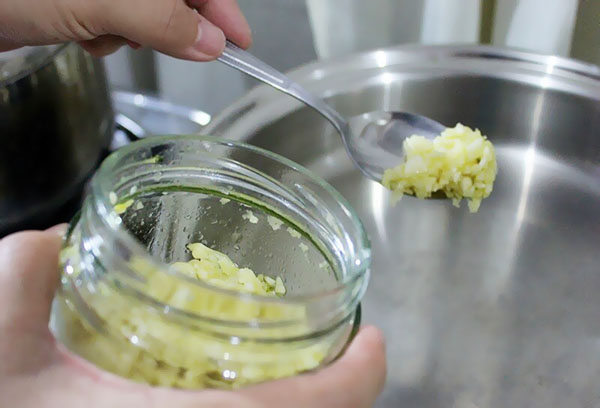
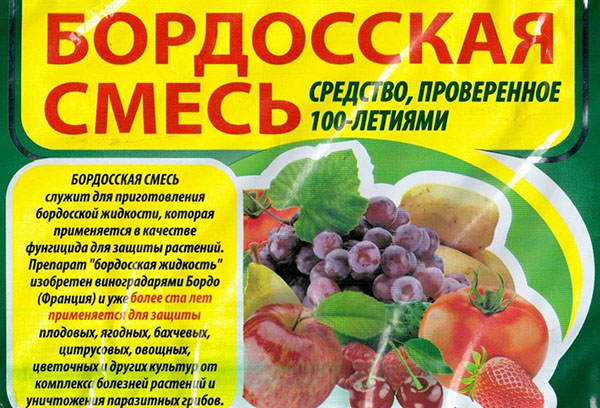
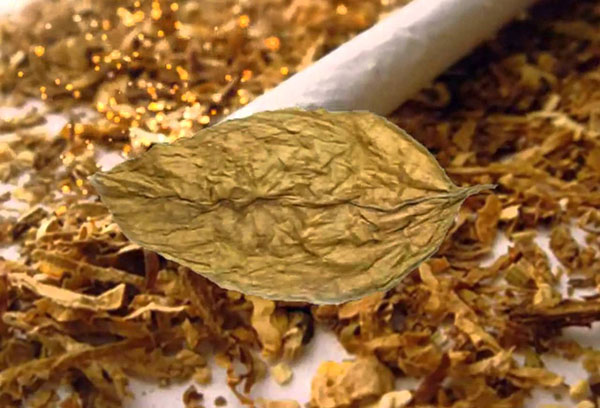
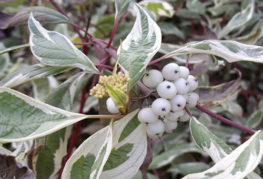
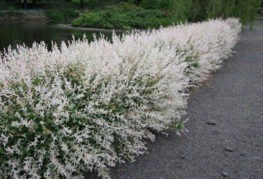
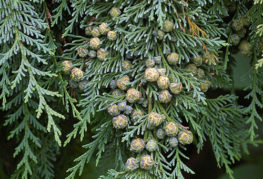
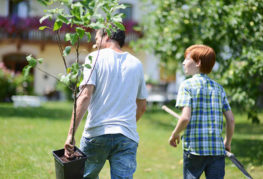
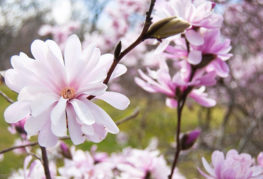
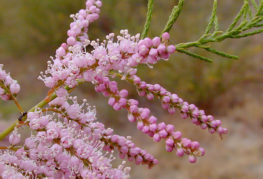
and will be published shortly.